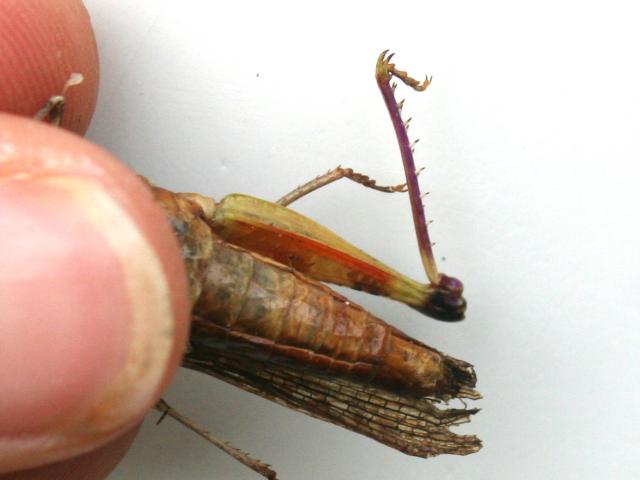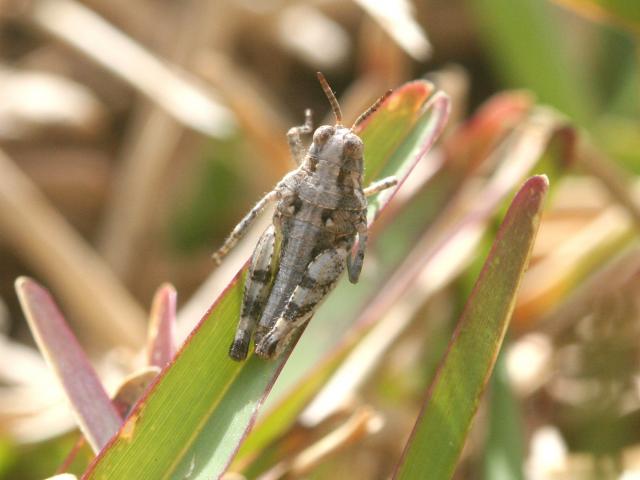Introduction
Common Urnisa is widespread across Western Australia. It is common in sandy areas along rivers and in coastal regions as well as the desert. It can be confused with the Australian Plague Locust (APL) as they are similar in size and shape but is distinguable by the orange-red colouring. The Common Urnisa also doesn't form dense bands like the APL.
Description
Common Urnisa is usually mottled and is a reddish-brown colour or grey, depending on its habitat. The Common Urnisa lacks the 'x' on its thorax that can be seen on the APL.
Males of the species are about 20 to 25 mm in length and the females are around 25 to 35 mm long. The Common urnisa has a raised head compared to its saddle shaped thorax and has no throat peg. The hind wings of this species are usually clear or sometimes have have a faint grey-yellow tinge and darker at the tip. The wing covers are pattened on the side forward half and, when viewed form above, a yellow stripe which splits where it meets the thorax can be seen.
The hind legs of the Common Urnisa has two dark bands across it and is yellow to orange on the inside whereas the lower part of the leg (tibia) is a purple to red colour and the knees are almost black.

Biology
Adults of the Common Urnisa can be found all year round and have three hatchings per year. Nymphs can be found in March, July/August and again in November.
Nymphs
Nymphs of the Common Urnisa are a finely mottled yellow, orange to red in colour. The nymphs are lighter in colour during early instars and their body is broad and flattened with the rear of the thorax almost twice the size of the head from above. As the nymph matures, their colour darkens to be a similar colour as the adults.
Unlike in the adults, the femur on the hind legs of newly hatches instars has a single dark stripe which is replaced to two dark stripes in the later instars.
Control
Adults and nymphs do not band and are generally quite scattered. Control is only recommended if grasshoppers are:
- retarding pasture growth and pasture is valued at the cost of replacement feed
- causing crop damage. These grasshoppers have a preference for cereals a and tend not to be found in established crops, though they can cause damage to crop edges.
Urnisa grasshoppers generally move into the crop from adjoining pasture. Effective nymph control will only be achieved if the crop and adjoining pasture is treated. If the adjoining pasture is not controlled, reinvasion can occur within days.
Crops or pastures that have dried off are not favoured by these grasshoppers.
Prior to applying any control measures consider the withholding period. Refer to 'See Also' section for withholding tables.
Insecticides registered for APL control will have efficacy on this grasshopper. Refer to 'See Also' section for insecticides and refer to the Australian Pesticides and Vetinerary Medicines Authority.
If insecticides are to be applied using a ground rig consider applying insecticides, if spraying conditions are conducive, when the grasshoppers are not actively moving such as in the morning. Adult grasshoppers are more likely to come into contact with insecticides if they are not actively flying.


